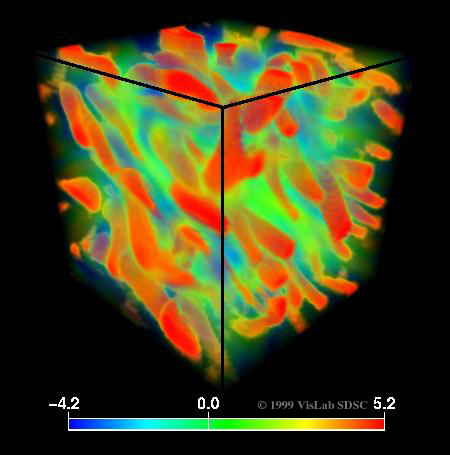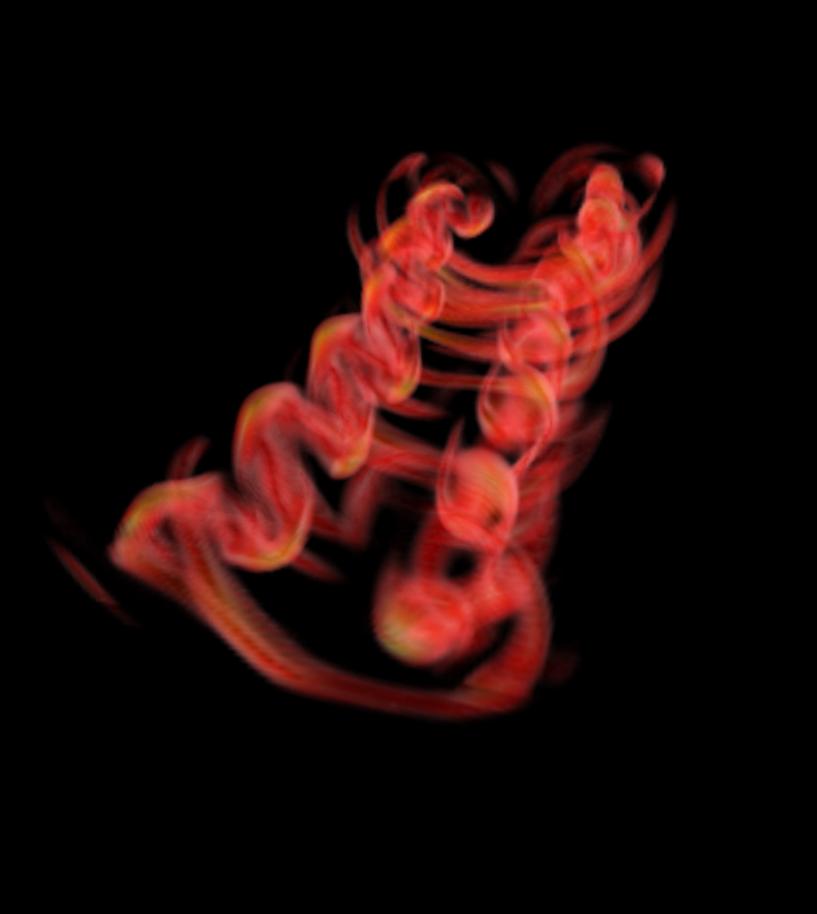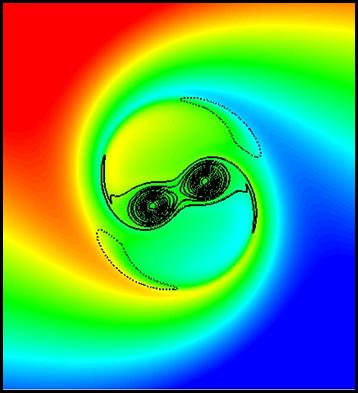Structure and Dynamics of Stratified Turbulent Shear Flows
Stratified sheared turbulence occurs in many environmental and engineering flows.
An improved understanding of the associated physics is essential for more accurate
prediction of the behavior of these flows and their mixing properties.
In this work, direct numerical simulations are used to examine geometric
properties and coherent structures and determine their role
in the overall dynamics of the flow.
An important aspect of stratified turbulence is overturning and the associated
flow structure(s). Density overturns, i.e., regions where heavy fluid resides over light fluid,
are considered active sites of stirring and mixing.
Full field data from direct simulations is exploited
to investigate overturns and vortex structures, their spatial
structure, dynamic evolution, and their significance to flow
energetics and mixing.
Such information contributes to our understanding of the physics of
stratified turbulence and may assist in the interpretation of physical measurements,
which are typically limited to one-dimensional vertical profiles.
|
 |


